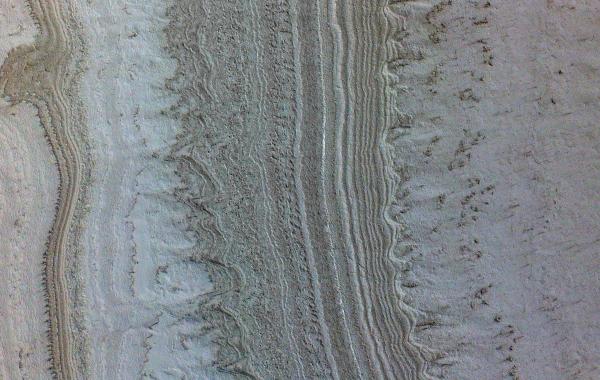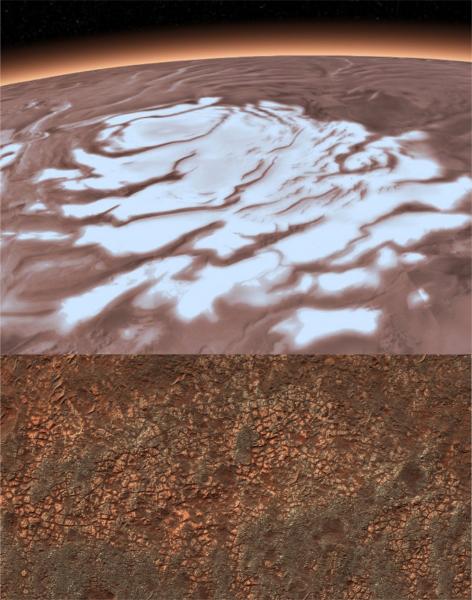Mysterious spots that scientists thought were subsurface lakes beneath the Martian south pole may instead be ancient clay deposits.
A new study suggests that clays are a likely cause of the bright radar reflections under the Martian south pole, which were previously thought to indicate liquid water lakes dwelling deep beneath the surface.
Previously, scientists used the MARSIS instrument aboard the ESA’s Mars Express Orbiter to find regions of high radar reflectivity coming from the subterranean boundary between deep layers of ice and dust, known as the south pole layered deposits (SPLD), and Martian bedrock. Liquid water reflects radar, but only salty water could remain liquid in the cold subsurface. Thus, the case for salty, underground lakes was born.

NASA / JPL / UA
However, recent studies (covered in this post) of additional radar-bright spots have cast doubt on the liquid water hypothesis. One of these studies, led by Carver Bierson (University of Arizona), used simulations to show that highly conductive minerals, like hydrated clays, can reflect radar as much as a salty underground lake.
Now, research appearing in the August Geophysical Research Letters, led by Isaac Smith (York University, Canada), supports the clay theory. Smith’s team investigated a particular type of clay called a smectite, commonly found on the Martian surface, to show that these clays could indeed reproduce the MARSIS data without the need for additional water.
Smectites are clay minerals that easily take up water. Smith’s team studied the properties of smectites in a laboratory setting under cold conditions (-46°F or -43°C) that mimic those in the Martian subsurface. When smectites are fully hydrated, they create a paste, which then freezes to a brittle state. The scientists found that this frozen paste could produce the radar signatures without the presence of liquid water, salt, or extra heat.

ESA / DRL / FU Berlin (top), NASA (bottom)
Hydrated clays don’t imply that liquid water currently exists on Mars, only that it did at one point. Liquid water is thought to have existed at the base of the SPLD more than 100 million years ago, and it could have hydrated surface smectites before layers of ice and dust covered the clays. These layers would have preserved the hydrated state. Since Smith’s team discovered smectites around the south pole, it’s only logical that they exist below the SPLD as well.
Bierson says that his and Smith’s collaboration make similar arguments, albeit from different angles, and he’s excited to see these new results. But, he adds, “this doesn’t rule out other candidates like saline ice or other clays.”
Future studies will test whether materials other than smectite have the right properties to reproduce the Martian radar reflections. Indeed, other studies currently under review suggest that nothing other than the layers of the SPLD itself is needed to reflect radar (preprint available here). Whatever the case, something geologically interesting is going on beneath the Martian south pole, and only time – and science – will uncover its nature.
 0
0









Comments
You must be logged in to post a comment.